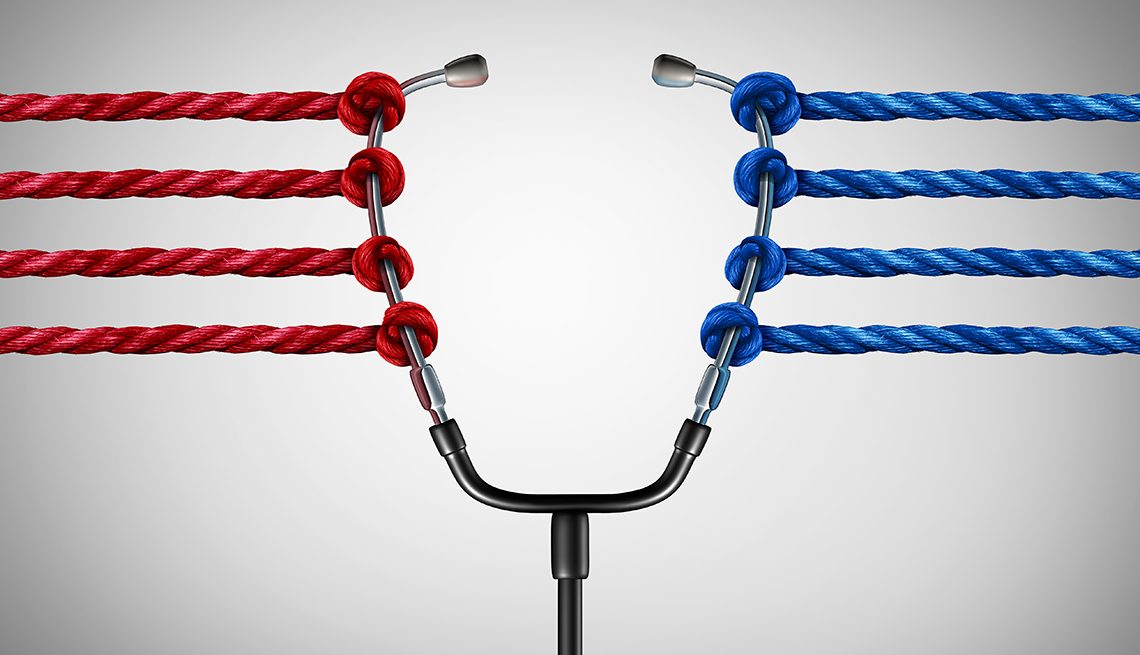
A Healthier Tomorrow – The politics of health – part 2
Imagine a Healthier Tomorrow
By Alison H. Page
The cost of health care and how we pay for it will continue to be a hot topic in political debates this year. Last month we discussed the origin of health insurance in our country. If you missed it, and would like to read it, just contact me at 715-684-1100 and I will get it to you. This month we will discuss the question, “How did the United States government get into the health insurance business?”
Wind back the clock to 1935. Franklin D. Roosevelt was president of the United States. The country was in the throes of the Great Depression. Unemployment rates were soaring. A series of government programs, called the New Deal, were implemented to provide relief, reform and recovery from the Great Depression. US Social Security was enacted in 1935 as part of the New Deal. Social Security provided benefits to retirees and the unemployed, and a lump-sum benefit at death. Keep in mind that in 1935 the average life expectancy in the United States was less than 62 years. By comparison, today the average American can expect to live to be 79.
In 1935, the decision was made by the Roosevelt Administration not to include a large-scale health insurance program as part of the new Social Security program. Why? Well, there simply was a lack of active popular, congressional, or interest group support. Roosevelt’s strategy was to wait for a demand and a program to materialize, and then if he thought it popular enough to throw his support behind it. The right moment never came for him to reintroduce the topic.
Now, role the clock forward to 1949 when President Harry S. Truman proposed a system of public health insurance. He envisioned a national system that would be open to all Americans but would remain optional. Participants would pay monthly fees into the plan, which would cover the cost of any and all medical expenses that arose in a time of need. The government would pay for the cost of services rendered by any doctor who chose to join the program. In addition, the insurance plan would give cash to the policy holder to replace wages lost because of illness or injury. The proposal was quite popular with the public, but it was fiercely opposed by the Chamber of Commerce, the American Hospital Association, and the American Medical Association, which denounced it as “socialism”.
Meanwhile, employer sponsored health insurance continued to proliferate. Foreseeing a long and costly political battle to get government sponsored health insurance, many labor unions chose to campaign for employer-sponsored coverage, which they saw as a less desirable but more achievable goal, and as coverage expanded the national insurance system lost political momentum and ultimately failed to pass. Using health care and other fringe benefits to attract the best employees, private sector, white-collar employers nationwide expanded the U.S. health care system. Public sector employers followed suit in an effort to compete. Between 1940 and 1960, the total number of people enrolled in health insurance plans grew seven-fold, from 20,662,000 to 142,334,000, and by 1958, 75% of Americans had some form of health coverage.
Still, private insurance remained unaffordable or simply unavailable to many, including the poor, the unemployed, and the elderly. Before 1965, only half of seniors had health care coverage, and they paid three times as much as younger adults, while having lower incomes. Consequently, interest persisted in creating public health insurance for those left out of the private marketplace.
The 1960 Kerr-Mills Act provided matching funds to states assisting patients with their medical bills. In the early 1960s, Congress rejected a plan to subsidize private coverage for people with Social Security as unworkable, and an amendment to the Social Security Act creating a publicly run alternative was proposed. Finally, President Lyndon B. Johnson signed the Medicare and Medicaid programs into law in 1965, creating publicly run insurance for the elderly and the poor, respectively. Medicare was later expanded to cover people with disabilities, end-stage renal disease, and ALS (Lou Gehrig’s Disease). Medicare is administered by the federal government. Medicaid is administered jointly by each state and the federal government.
Today, 60 million Americans, or 18% of the population, are covered by Medicare. About 75 million Americans, or 23% of the population, are covered by Medicaid; 40% of those covered by Medicaid are children. So, do the math. Over 40% of health insurance is supplied by the government. Add in the coverage provided by the government for our military personnel and their families and that number gets closer to 50%. Clearly, the government is a major provider of health insurance in the United States of America. Next month we will talk about the history of Medicare and Medicaid in Wisconsin.

